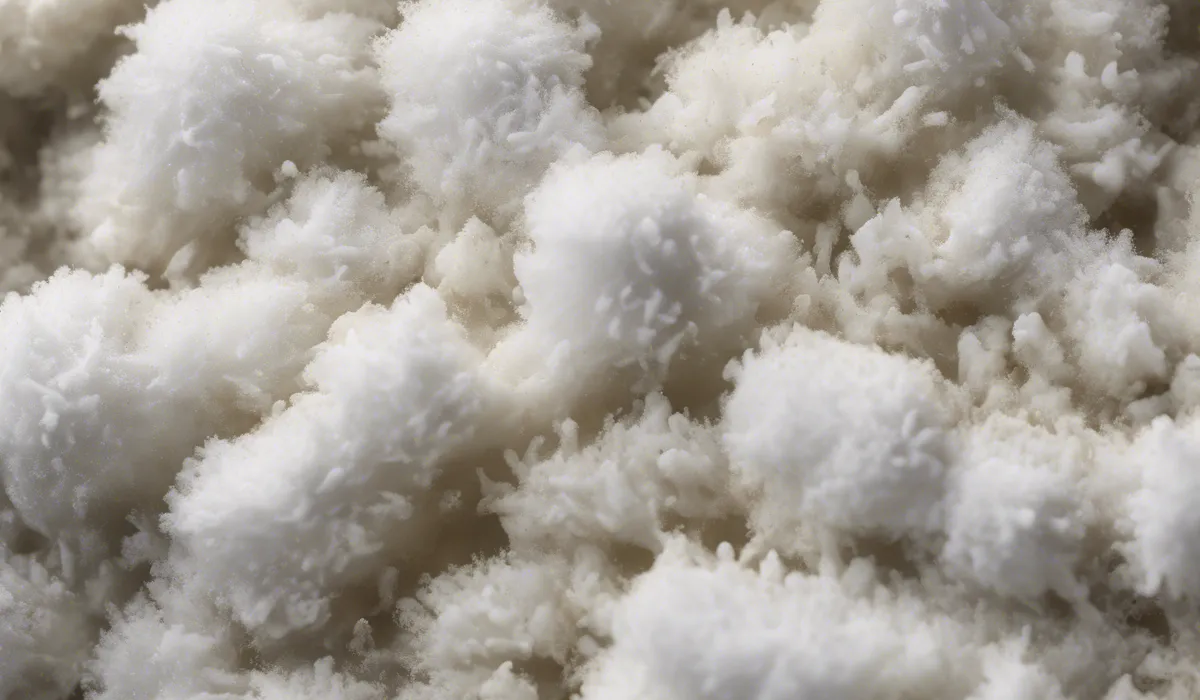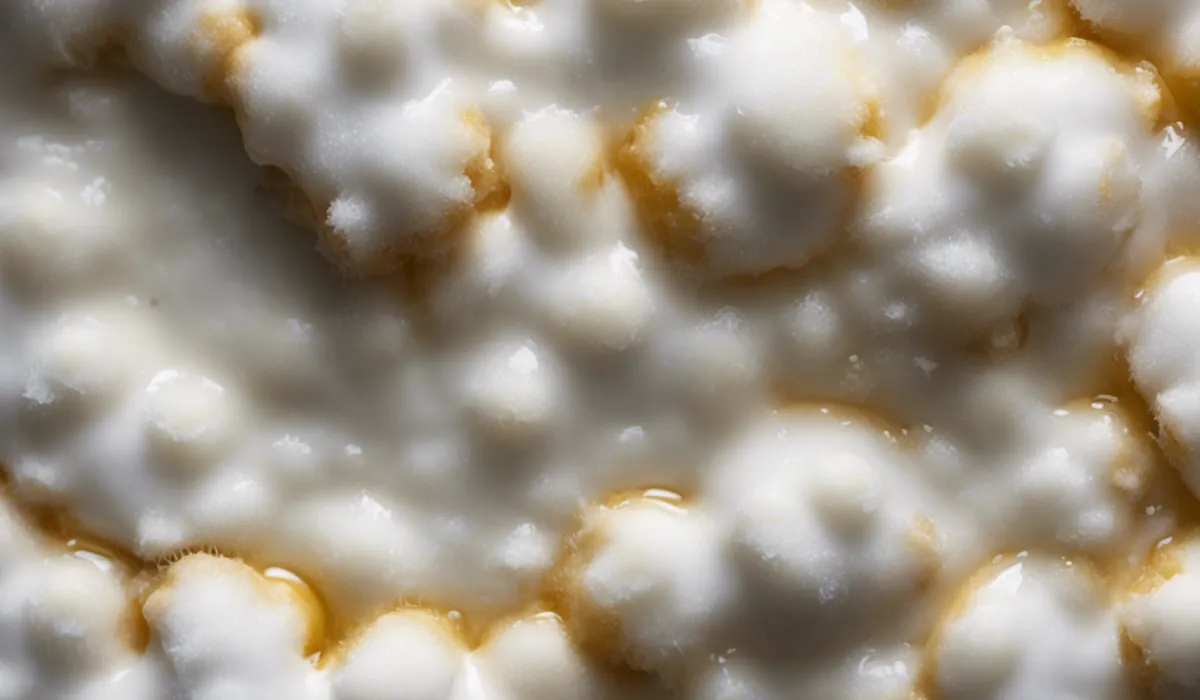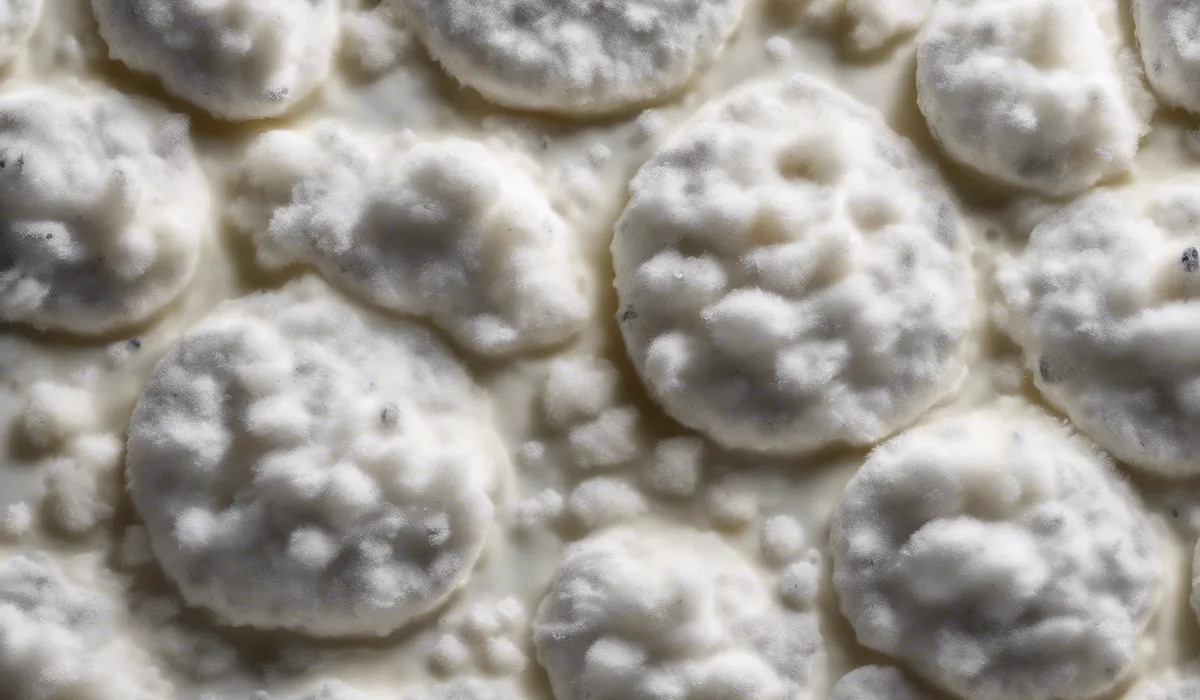Yes, white fuzzy mold on food is dangerous as it can produce harmful mycotoxins. It indicates spoilage and should not be consumed. Discard moldy food to avoid health risks.
Understanding White Fuzzy Mold

What is Mold?
Mold is a type of fungus that appears as a fuzzy growth. It thrives in damp and warm environments.
Mold reproduces through tiny spores that travel through the air. These spores land on surfaces and begin to grow when conditions are right. Mold can be many colors, including green, black, and white. It often smells musty.
Common Types of Food Mold
Food often hosts various molds. White fuzzy mold, one of the most common types, includes species like Penicillium.
This mold can start out as white spots and then grow into a thick layer. Other molds that might appear on food are black or green, like Aspergillus or Cladosporium.
Mold Life Cycle on Food
Mold begins as spores, which are like seeds. These spores land on food and, with enough moisture, they germinate.
The mold then forms hyphae, which are thin threads that spread across the food’s surface. As the mold grows, it absorbs nutrients from the food, causing it to spoil.
Growth Conditions for Mold
Mold needs certain conditions to grow. It loves moisture and warmth, which is why it often appears on food that’s left out.
Foods with high water content, like fruit, cheese, and bread, are especially prone to mold growth. Mold can grow in the fridge too, where it’s cool but moist.
Health Impacts of Consuming Moldy Food

Why Is Eating Mold Dangerous?
Eating mold can be harmful. Mold can produce substances called mycotoxins that can make you very sick.
These toxins can cause allergic reactions or respiratory problems. Some can even be poisonous. It’s important to avoid eating moldy food to stay safe.
Risks of White Fuzzy Mold
White fuzzy mold can be especially dangerous because it often produces mycotoxins. While not all white mold is toxic, some types, like certain Penicillium species, can be harmful. Eating food with this mold can lead to digestive issues and other health problems.
Who Is at Risk?
Everyone should avoid moldy food, but some people are more at risk. This includes young children, the elderly, and those with weak immune systems.
People with mold allergies may also have severe reactions. Symptoms can include coughing, wheezing, and throat irritation.
Understanding Mycotoxins
Mycotoxins are toxic chemicals that some molds produce. They can cause serious illnesses, including cancer, if consumed in large amounts over time. Mycotoxins can stay in foods even after the mold is removed.
That’s why it’s essential to throw away moldy food instead of just cutting off the moldy part.
Prevention and Safe Handling of Moldy Food

Storing Food Properly
Keeping food fresh and mold-free is all about storage. Dry foods should be kept in airtight containers.
Refrigerate perishable items and eat them before they spoil. Check your fridge’s temperature—it should be below 40°F (4°C) to slow down mold growth.
Identifying and Disposing of Moldy Food
If you see mold on food, it’s time to throw it away. Mold can spread beyond what you can see.
Wrap the moldy food in plastic and put it in the trash. Wash your hands afterwards to avoid spreading spores to other foods or surfaces.
Clean Kitchen, Less Mold
Keeping your kitchen clean helps prevent mold. Clean your fridge regularly. Wipe up spills right away to avoid giving mold a place to grow. Use a solution of water and vinegar to clean surfaces, as this can kill mold spores.
Mold on Cheese: When Is It Safe?
Sometimes, it’s okay to cut off the mold and eat the good part. This is true for hard cheeses and firm fruits and vegetables like cabbage. Cut at least 1 inch around and below the mold spot. Be sure the knife doesn’t touch the mold to avoid contaminating the rest of the food.
By following these guidelines, you can minimize the risks associated with mold on food. Always err on the side of caution; your health is worth more than the cost of replacing a moldy food item. Remember, when in doubt, throw it out!
FAQs About White Fuzzy Mold on Food
Is it safe to eat food with white fuzzy mold on it?
No, it is not safe to eat food with white fuzzy mold as it may contain harmful mycotoxins and indicates spoilage.
Can white fuzzy mold on food cause health problems?
Yes, consuming white fuzzy mold on food can lead to health problems due to the potential presence of mycotoxins.
What should I do with food that has white fuzzy mold?
Discard food with white fuzzy mold to avoid health risks, as it is a sign of spoilage and potential toxin production.
Is it okay to remove the moldy part and eat the rest of the food?
No, you should not simply remove the moldy part because mycotoxins could have spread throughout the food, making it unsafe to consume.
Are some types of mold on food safe to eat?
While some molds are used in food production, such as cheese making, white fuzzy mold found on general food items is not safe and should not be consumed.
Final Thoughts
White fuzzy mold on food is a clear sign of spoilage and poses health risks due to potential mycotoxins.
Consuming moldy food can be harmful, so it’s crucial to discard any items that exhibit mold growth to safeguard against foodborne illnesses.
